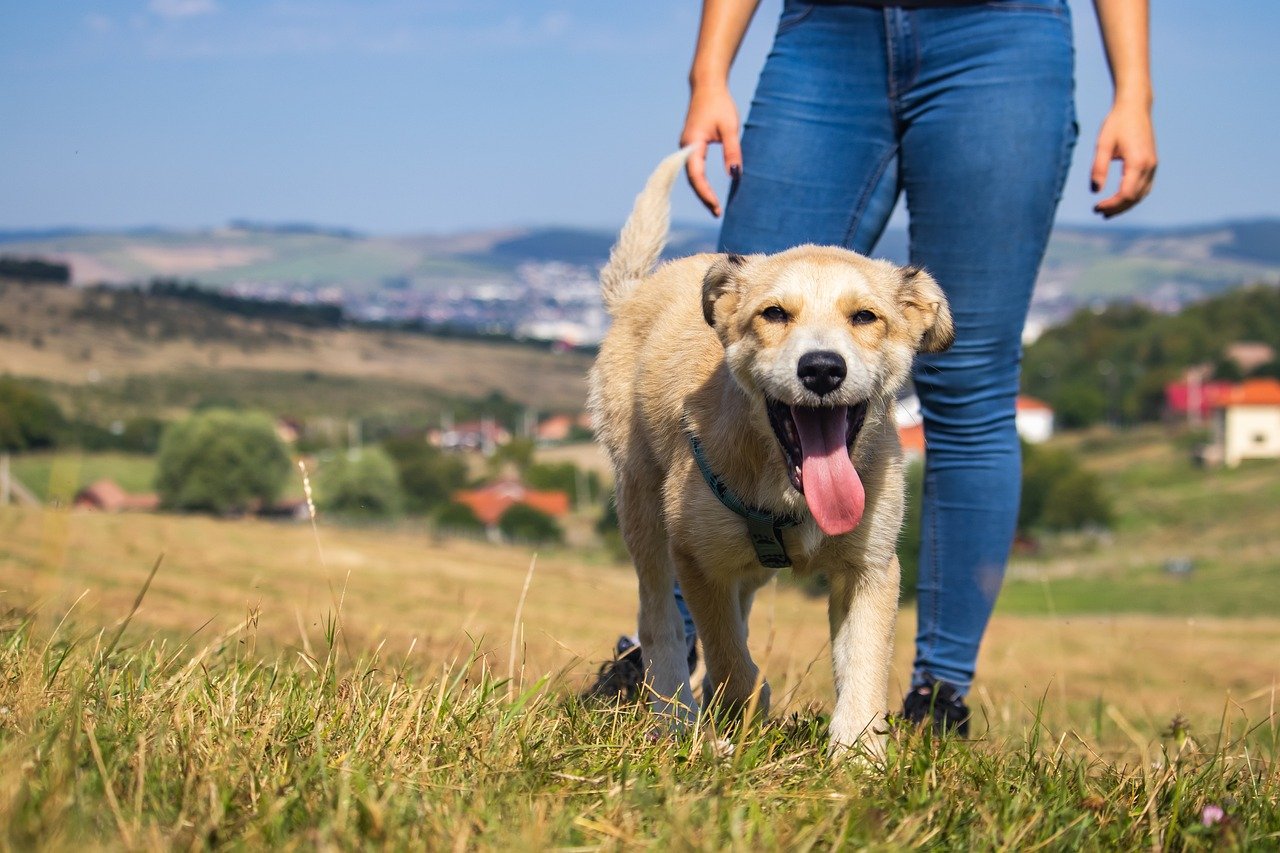Dog owners often wonder about the safe temperatures to take their furry friends for a walk.
While taking your dog out for exercise and bathroom breaks is important, it’s equally crucial to ensure their safety and well-being.
Walking your dog in extreme temperatures can be dangerous, and it’s essential to understand the risks involved.


Generally, the ideal temperature for walking your dog is between 45 and 75 degrees Fahrenheit.
However, this range can vary depending on your dog’s breed, age, size, and health conditions.
It’s important to remember that dogs are more sensitive to temperature changes than humans, and they can quickly become overheated or suffer from hypothermia.
Therefore, monitoring your dog’s behaviour and adjusting your walking routine is crucial.
Understanding Safe Temperatures for Dog Walks
Temperature Guidelines
When walking your furry friend, being aware of the outdoor temperature is important.
Dogs can overheat or get frostbite, just like humans can.
Generally, it’s safe to walk your dog in temperatures between 45°F and 85°F. Anything outside of this range can be dangerous for your pet.
In temperatures below 45°F, dogs can experience hypothermia, especially if they are small or have short hair.
Keeping them warm with a coat or sweater and limiting their time outside is important.
If the temperature drops below 32°F, keeping your dog indoors is best.
In temperatures above 85°F, dogs can suffer from heat exhaustion or heat stroke.
Signs of heat exhaustion include excessive panting, drooling, and lethargy.
If your dog shows any of these signs, it’s important to take them inside and cool them down with water.
Breed-Specific Considerations
It’s important to note that different breeds have different temperature tolerances.
For example, a Siberian Husky is more comfortable in colder temperatures than a Chihuahua.
If you have a breed sensitive to temperature, taking extra precautions is important.
Brachycephalic breeds, such as Bulldogs and Pugs, are more susceptible to heat stroke because of their short noses.
They have a harder time cooling down through panting and can quickly overheat in hot temperatures.
Keeping these breeds indoors during hot weather and limiting their time outside is important.
Recognizing Signs of Heatstroke and Hypothermia
Symptoms of Heatstroke
Heatstroke is a serious condition that can be fatal if not treated promptly.
Dogs are particularly susceptible to heatstroke, especially during hot weather or exposure to high temperatures for extended periods.
Here are some common symptoms of heatstroke to look out for:
- Heavy panting
- Excessive drooling
- Rapid heartbeat
- Vomiting
- Diarrhea
- Weakness or collapse
- Seizures
If you notice any of these symptoms in your dog, immediately move them to a cooler area, offer them water, and seek veterinary care as soon as possible.
Symptoms of Hypothermia
Hypothermia is another dangerous condition when dogs are exposed to cold temperatures for too long.
It can lead to a drop in body temperature, which can cause organ failure and even death.
Here are some common symptoms of hypothermia to look out for:
- Shivering
- Lethargy
- Weakness
- Slow breathing
- Stiff muscles
- Dilated pupils
If you suspect your dog is suffering from hypothermia, move them to a warmer area immediately, wrap them in a blanket, and seek veterinary care as soon as possible.
Preventative Measures for Safe Dog Walking
Proper Hydration
When walking your dog, bringing water for you and your furry friend is important.
Dogs can easily dehydrate, especially during hot weather or long walks.
Bring a water bottle and a collapsible bowl for your dog to drink from.
Additionally, it’s recommended to take frequent water breaks during your walk to ensure that your dog stays hydrated.
Paw Protection
Dogs’ paws are sensitive and can be easily injured by hot pavement, rough terrain, or sharp objects.
Consider investing in booties or paw wax to protect your dog’s paws.
Booties are designed to protect your dog’s paws from extreme temperatures and rough terrain. In contrast, paw wax provides a protective layer that can help prevent injuries.
Additionally, checking your dog’s paws regularly for any cuts, blisters, or foreign objects is important.
Best Practices for Dog Walking in Extreme Weather
When extreme weather is extreme, taking extra precautions when walking your dog is important. Here are some best practices to keep in mind:
- Check the weather forecast before heading out. If the temperature is too hot or too cold, it may not be safe for your dog to go for a walk.
- Avoid walking your dog during the hottest part of the day.
- In the summer, this is usually between 10 a.m. and 4 p.m.
- In the winter, it may be best to wait until the sun has had a chance to warm things up.
- Keep your dog hydrated. Bring a water bottle and a collapsible bowl, so your dog can drink whenever needed.
- Protect your dog’s paws.
- In the summer, hot pavement can burn your dog’s paw pads.
- Salt and other chemicals used to melt ice in the winter can be harmful. Consider using booties to protect your dog’s feet.
- Dress appropriately.
- In the winter, your dog may need a coat to keep them warm.
- Consider a cooling vest or bandana in the summer to help keep them comfortable.
- Be aware of signs of distress.
- If your dog is panting heavily, drooling excessively, or seems sluggish, it may be time to return home.



